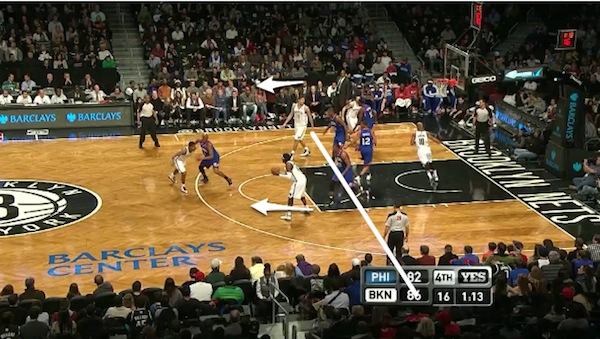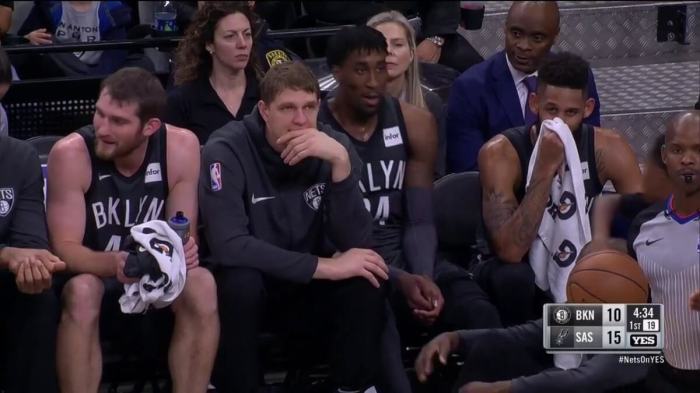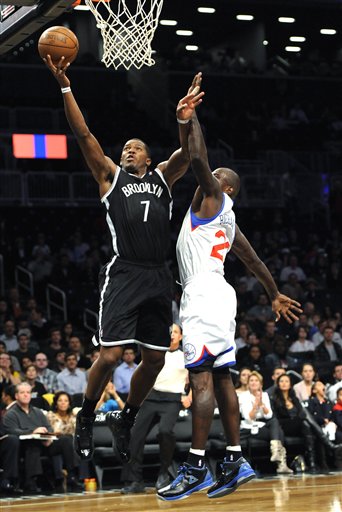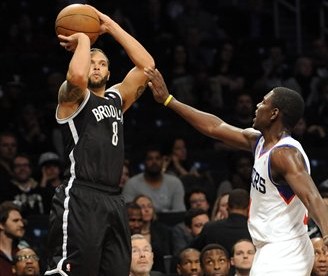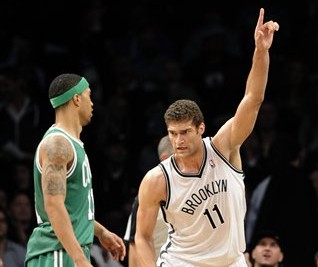“It was just too much one-on-one. I don’t mind the one-on-one at the end of the shot clock, but we’re playing the 1-on-1 in the beginning of the shot clock. We’ve had to take a look at how we function in those situations, have a little bit more ball and player movement, a little more continuity, but none of it is going to work unless we make good passes, set good screens, space the floor properly, and don’t turn the ball over.”
– Avery Johnson
More sets and less isolations was the edict Avery Johnson promised after the Brooklyn Nets’ humbling loss to the New York Knicks. With three days off to practice and fine-tune their offense, the Nets needed to showcase a crisper offense, featuring more ball and man movement.
That’s precisely what they did in topping the 76ers 95-92 Sunday afternoon.
A set Johnson leaned on heavily was a flex action style set that the Brooklyn Nets used eight different times, and according to Johnson, scored in seven.
Astute fans (or just those living in Utah) may have noticed that these flex actions are similar to what Deron Williams ran during his Jazz days and something he admits he’s more comfortable with. So it should come as no surprise that in the game’s defining moments, the Brooklyn Nets turned to this play, and Williams and the Nets executed flawlessly.
Let’s take a look:
As is the case with any flex-based offense, the bigs (in this case Brook Lopez and Gerald Wallace) start above the foul line, splitting the court. This allows for plenty of spacing for all of the baseline screening and cutting that happens in the flex. Motion triggers once the ball is entered into one of the bigs, as is done once Wallace catches the pass.
What follows is a rather simple offense that consists of two screens; a “flex” screen (along the baseline) and a down screen set for the original screener. Because the flex is a continuity, motion offense, the same action is then repeated on the other side of the court as the ball is swung. Flex screen, rinse, down screen, later, pass, repeat.
Though conceptually simple, if done correctly it’s quite effective, as the Nets showed last night.
In the above image, Keith Bogans is setting the first flex screen in the corner for Williams, who is cutting along the baseline looking for a layup. You’ll notice Brook Lopez is preparing to set his down screen for the screener (Bogans) while on the other side of the court Joe Johnson, who initiated the motion with his pass to Wallace, is clearing to the corner to continue the offense.
As the ball is swung to other side of the floor, the action continues with Williams setting his flex screen for Johnson to look for a layup. Wallace, after passing the ball, will screen the screener — in this case, that’s Deron Williams.
What’s important to note here is the blue arrow, pointing to Sixers point guard Jrue Holiday. The basis for setting any screen in basketball is to force the defense to make a decision. A simple-by-design offense like the flex can be so effective because multiple defenders need to make multiple decisions in a short amount of time.
Here you see Holiday has to decide just how much help he should give to his teammate Damien Wilkins on the Williams screen. If he doesn’t give enough help, he risks giving up a wide-open layup to Joe Johnson. If he gives too much help, his closeout to Williams becomes long and treacherous.
Perhaps Holiday and Wilkins were supposed to switch. Perhaps it was just a case of Holiday over-helping. Regardless, both defenders stay with Johnson as he comes off the Williams screen. Which, remember, is the point of the offense — forcing decisions.
Nobody stays with Williams, and like a shark in the water, Williams smells blood — Holiday’s turned-away head acts as his bucket of chum. You can practically see the “I’m going to shoot as soon as I catch this ball” body language of Williams as he makes his cut oozing through the picture.
Avery Johnson and the Brooklyn Nets promised us more sets and then delivered on that promise with back-breaking flex action to the tune of seven scores on eight attempts. I’d suspect you can expect more of that in the future.
Oh, and about that Williams shot:

